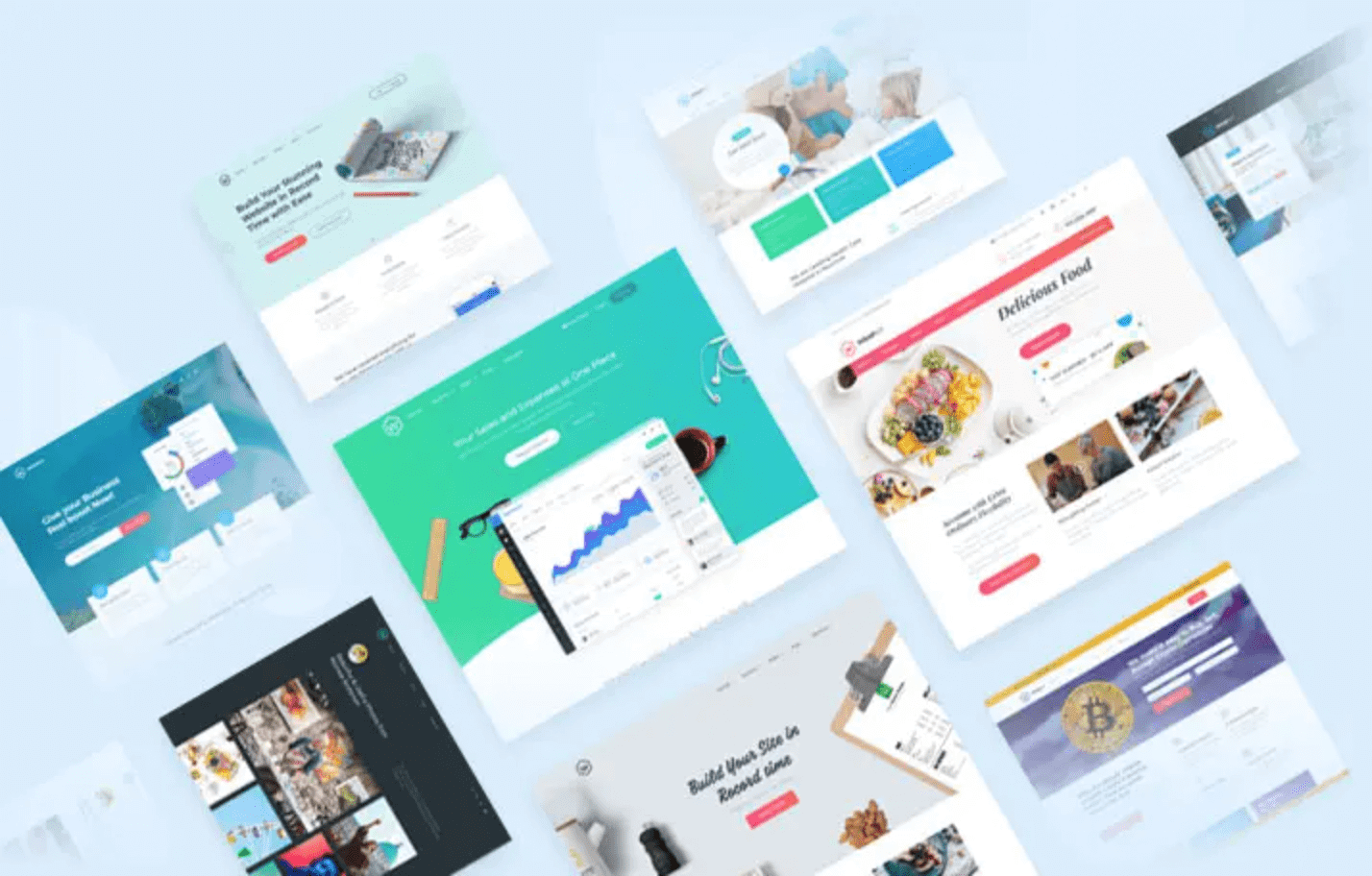Looking for ways to promote your website on a budget? How about for free? Website advertising doesn’t have to break your budget. Here are nine ways to advertise your website and get more traffic for free.
Advertising a website can be a big expense for small businesses with limited marketing budgets. But did you know there are several ways you can advertise your website and increase website traffic for free?
While free advertising may not be all you need, it’s a good start for promoting a website, and it can go a long way toward helping local businesses and service providers get discovered on the web.
That’s important, because if you’re not getting customers to come to your website (or worse, don’t have a website), you’re missing out on a significant sales opportunity. How significant? The DigitalCommerce360 website estimates that consumers spent $861.12 billion online with U.S. merchants in 2020.
So how can you get consumers or businesses to find your website and buy from you without spending a fortune on online advertising? Here are nine ways to advertise and promote your website for free.
1. Improve your SEO
First, what does SEO stand for? SEO is an acronym for Search Engine Optimization. It refers to the process of adapting your site pages, content, and design to better appeal to search engines. While many businesses spend thousands of dollars a year employing SEO companies, the truth is that you may be able to improve your search engine ranking without spending a dime.
The place to start is the title of each page on your website. The title, called a title tag by SEO specialists, is one of the most important pieces of information a search engine looks at to determine what the page is about and when to show it in answer to a query on the search engine.
The page title is what shows in the tab on your browser, and often it’s the same as the main headline on your page. Each page on your site should have a unique title so that it tells users and search engines what unique content is on each page. That title should be a keyword or phrase that your customers are likely to search for.
For your homepage, you’ll want your business name in the title, but in most cases it should follow the keyword phrase (example: Environmental Consultants – Myco and Associates).
If you’re managing your own website using WordPress or some other content management system, you can enter the title information when you add a new page or post. If you have someone else managing your pages, be sure to tell them what words to use for the title of each page. (If you don’t, you may wind up with pages on your site that have titles that tell search engines that they’re “just another WordPress site.”)
If you’re not sure what keywords to use for your page titles, you can find them for free in a couple of ways. One is through the Google keyword tool planner tool. You have to sign up for Google Ads to use it, but you can sign up for Google Ads for free, and then use the tool. (You don’t pay Google anything unless you actually run an ad campaign.) Another free tool you can use to find keywords is Ubersuggest.
In addition to using keywords in your title tag, you want to use them in meta descriptions, subheadings, image alt tags (descriptions of the images), and the body of your content. (Search engines look at the content, too).
Be sure you include not only the short, common terms people might search for (shoes, for instance), but focus on what’s known as long-tail keywords, as ranking for shorter keywords can be more of a challenge. A long-tail keyword is just a longer phrase. (Men’s Brown Oxfords, for instance.)
Using keywords in this way can increase the odds of your site ranking high on Google and Bing. If you rank high enough, your website pages can show up for free right under the paid ads on the search engines.
2. Focus on email marketing
A type of direct advertising, email marketing allows businesses to communicate with current and prospective customers about products, services, promotions, news, and more. Since you build and own your own mailing list, it’s one of the most cost-effecitve ways of promoting a website.
For best results, be sure to include links to your website, blog, and social media pages at multiple points within your email communication, and don’t forget to include a call to action. Additionally, companies should refrain from contacting individuals who haven’t elected to subscribe to their email list or newsletter.
Contrary to popular belief, you don’t have to spend a fortune on your email marketing efforts. In fact, some services offer a free option for companies that aren’t sending too many emails on a monthly basis. According to the Direct Marketing Association, the ROI (return on investment) on email marketing is approximately $38 for every $1 spent.
If you already have an email marketing service and email list, use it! Stay in contact with customers and prospects on a regular basis. If you’re only sending them email once or twice a month, you can probably increase the frequency (and therefore increase the chance your emails will be seen and read) without spending any additional money.
3. Be active on social media
A recent report reveals that 43% of small businesses say social media is their most effective advertising tool. Whether the goal is to boost sales, build the brand, or disseminate information, social media allows companies to convert leads into customers. In particular, small to medium-sized businesses (SMBs) find success by running contests, hosting giveaways, posting videos, and otherwise interacting with their followers regularly.
Although most social media sites encourage you to buy advertising to reach wider or more specific audiences, just being active and building a good following helps you gain visibility and build website traffic at no cost.
While Facebook and Twitter remain crucial for website promotion, today’s small businesses are expanding their social media presence to include Pinterest, Instagram, LinkedIn, and YouTube.
Visual sites like Instagram are particularly important for businesses that sell apparel, makeup, or other products that are best sold through pictures. The world’s second most popular site, YouTube, is a free place to post videos related to your products and services. For best results, make sure that your posts and videos include links back to your website, where customers can make purchases or access more info.
4. Get found in search and maps through free business profiles
As a small business owner, you need to do everything in your power to ensure that customers find your company at the exact moment they’re looking for your products or services. To that end, creating a business profile on Google is of the utmost importance.
A free tool for promoting your company, Google My Business enables you to list your SMB on Google Search and Maps. Additionally, you can provide searchers with crucial information, including your business address, phone number, hours, and, of course, your website.
Want to help your Google business listing stand out from the pack? After creating your listing, log into your Google My Business account to add photos, promotions, offers, and more. The goal is to show prospective customers how your business stands out from the competition.
Additionally, small business owners can create free business listings on Bing, Facebook, Yelp, and Thumbtack, among other online directories. Be sure that all listings include clear information on your company’s organization, mission, and services.
Yellow Pages, Angie’s List, and other sites also offer free profile listing opportunities. To discover others, think like your customers. Where do they search when they want what you sell? See if those places offer free listings to businesses.
Besides these resources, you may belong to some offline organizations that have member directories. Be sure your website gets listed in those directories and that the website URL is accurate. People — your potential customers — actually use those directories to find local companies to do business with. Links pointing to your site are also important for getting found in search engines.
5. Start guest blogging
Guest blogging has lost some of its popularity in recent years. However, the truth is that this technique can go a long way toward helping drive traffic to your website, provided that you select the right host sites.
Additionally, talented guest bloggers help position themselves as industry leaders, thereby bringing credence and desirability to their products and services. Just make sure that the blogs you submit are well-written and informative rather than spammy and self-promoting, and that you can include a link to your site in an author’s bio or some other place in the post.
Remember, though, you’re aiming to provide the host site’s readers with valuable information — not just advertise your own wares.
6. Participate in LinkedIn groups
LinkedIn isn’t just a resource for dissatisfied employees and companies looking to expand their staffs. On the contrary, small businesses can utilize LinkedIn as a way of marketing their products and services and making valuable connections.
Start by joining LinkedIn groups related to your business or industry. Then, participate in group discussions to demonstrate your expertise in the field. For best results, keep posts respectful and friendly and avoid overtly promoting your own goods.
7. Participate in other online forums
You can also advertise your business without spending any money by participating in online forums such as Quora. Just like LinkedIn groups, the key to success is to provide valuable insights and not be overly promotional.
8. Use your personal email signature
How many emails do your send or answer every day? Why not use those emails to advertise your business, or to advertise the mailing list for your business?
Most email programs offer you a way to create a custom signature that you can add automatically to emails you send. To use it as a mini ad, simply add a link to your website or a call to action to sign up for your website mailing list under your email signature. Or, you could promote an item or special sale in the signature line.
9. Include your site on all printed materials
Business cards and flyers aren’t free, but they are promotional materials you use regularly. Be sure your website address is on all of your promotional materials, packaging, mailers, and handouts and that it’s easy to find. Since you’re already having the materials printed, it won’t cost you anything extra to include the website URL.
How We Can Help
Of course, if your efforts to advertise your business website are successful, you’ll want your visitors to find your site to be functional, updated, and eye-catching. If you’re struggling with your current website or don’t yet have one, our business website service is easy to use and affordable. With our customization tools and a library of templates to choose from, you can create a website tailored to your needs. Contact us today for more information.
Disclaimer: The content on this page is for informational purposes only, and does not constitute legal, tax, or accounting advice. If you have specific questions about any of these topics, seek the counsel of a licensed professional.
Start an LLC in Your State
When it comes to compliance, costs, and other factors, these are popular states for forming an LLC.










